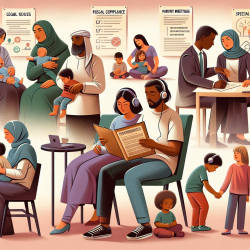Understanding the Dynamics of Social Networks: A Guide for Practitioners
As a practitioner in the field of special education, understanding the dynamics of social networks can significantly enhance your ability to connect with students, parents, and colleagues. A recent study titled The Competition of Homophily and Popularity in Growing and Evolving Social Networks sheds light on two fundamental mechanisms that drive social network growth: homophily and popularity.
Homophily vs. Popularity: The Driving Forces
Homophily refers to the tendency of individuals to associate with others who share similar attributes. In contrast, popularity involves connecting with individuals who are already well-connected. The study introduces the Homophily-Popularity (HP) model, which combines these mechanisms to simulate network growth. This model is particularly relevant for practitioners who aim to foster inclusive and effective communication within educational settings.
Applying the HP Model in Educational Settings
By understanding the interplay between homophily and popularity, practitioners can develop strategies to enhance network connectivity and engagement. Here are some practical applications:
- Enhancing Student Engagement: Recognize the role of homophily by grouping students with similar interests for collaborative projects. This can foster a sense of belonging and increase participation.
- Building Professional Networks: Leverage the popularity mechanism by connecting with influential educators and leaders in your field. This can open up opportunities for collaboration and professional growth.
- Parent-Teacher Communication: Use homophily to identify common interests with parents, which can improve communication and build trust.
Encouraging Further Research
The HP model provides a framework for understanding social network dynamics, but there is always room for further exploration. Practitioners are encouraged to delve deeper into the nuances of network growth and apply these insights to their specific contexts. This can lead to more tailored and effective strategies for fostering communication and collaboration.
Conclusion
Understanding the mechanisms of homophily and popularity in social networks can greatly enhance a practitioner's ability to connect and engage with their community. By applying the insights from the HP model, practitioners can create more inclusive and dynamic educational environments.
To read the original research paper, please follow this link: The Competition of Homophily and Popularity in Growing and Evolving Social Networks.










